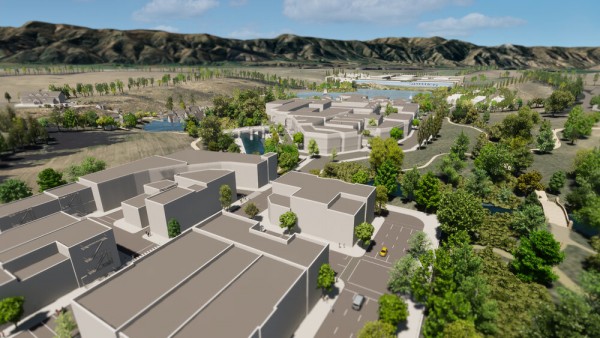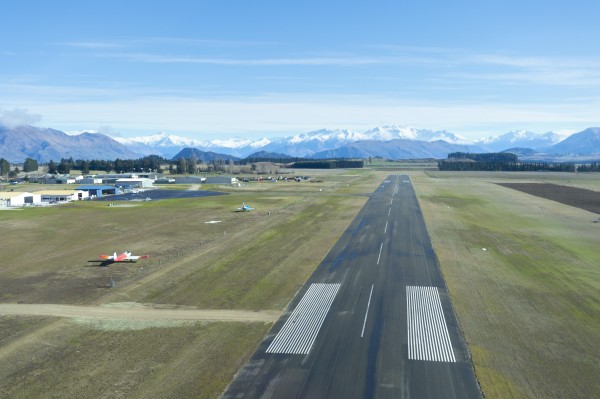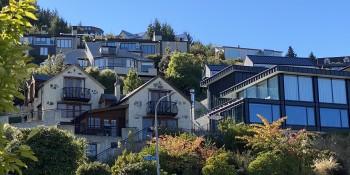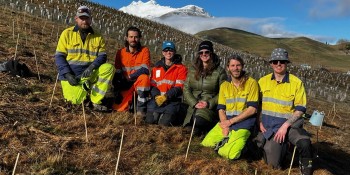Silverlight Studios: 'the devil is in the detail'

The rapidly evolving Silverlight Studios proposal is leaving some Wānaka residents concerned the Government’s fast-track consenting process is allowing important decisions about land use and development in the Upper Clutha to be decided without community input.

The $280-million studio project is ambitious in scale - but the proposed consent includes some unusual details.
The latest resource consent application by Silverlight seeks approval for hundreds of accommodation units to be included at its planned mega film park on the outskirts of Wānaka, beside the airport.
As it reads now, the resource consent will also allow for Silverlight to hand over their permission to build to someone else.
Who that may be – well, it can be anyone Silverlight nominates (and anyone that nominated party subsequently nominates).
On top of that, the resource consent will also let Silverlight (or any other, as yet unknown third-party Silverlight nominates), use what’s been given the all-clear in this consent as a “permitted baseline” for a new, future project at the site requiring additional resource consent.
They’re small details, sometimes just a few sentences in hundreds of pages of documents related to the resource consent application.
But there’s potential for them to allow the initial film studio proposal, presented to the community as a boon for the local film and television industry (and the very reason for the project being put on a fast-track consenting pathway) to evolve into something else.
The Mount Barker Residents Association has been part of a select group invited to comment on Silverlight’s latest resource consent application.
Its members aren’t against the film studio – they make that clear in their comments.
What does concern them is the inclusion of clauses in the resource consent that give Silverlight greater leeway to veer away from its original proposal.

Do the detailed Silverlight plans have the potential to morph into something quite different?
A specialist facility for making film and television, generating higher-paying jobs and diversifying the local economy, great; tourism add-ons or a Disneyland-style theme park generating more of the same lower-paid service roles, not so great, the group says in their comments.
Likewise: Accommodation for cast and crew on film productions, no worries; units to be rented to any old visitor, not so acceptable.
Mount Barker Residents Association chair Jerry Rowley finishes his cover letter to the expert consenting panel with:
“We believe the people of the Upper Clutha will have no idea what will be built, when it will be built or by whom without meaningful constraints being included in your final consents addressing tourism activities, visitor accommodation, and the transferability and nature of the approvals.”
The devil is in the detail (so let’s try and walk you through it)
With plenty to consider, the panel deciding whether Silverlight can include hundreds of residential units in its proposed film park has given itself some breathing room to make its decision.
Today (Friday, February 4) was the deadline for an independent consenting panel to give thumbs-up or thumbs-down to the accommodation proposal, but the panel yesterday extended the deadline until February 24.
Silverlight outlines plans for up to 300 units in its resource consent application, which gained approval from the Minister for the Environment to be fast-tracked.
Then there’s plans for the infrastructure needed for people to live onsite at the mega studio complex – things like car parking, access for walking and transport, and three waters services.
In its application, Silverlight says the units will allow cast and crew working at the film studio, as well as film school students and other workers, to live onsite.
In addition, when any of the units are empty, Silverlight wants tourists to be able to stay in them too.

Film studio, tourist accommodation or real estate project? Silverlight Studios appears to be pushing for all options to be available.
A separate resource consent for Silverlight’s $280-million studio complex was granted by a fast-track panel in December.
If the original project goes ahead, the film studio will draw a whole bunch of creative and construction workers into Wānaka putting more pressure on already stretched property and rental markets.
It’s a problem that was highlighted during the initial resource consent application process.
Silverlight’s answer – onsite accommodation, which the original resource consent application did not, and could not, allow for.
A fresh resource consent application requesting go-ahead for the housing component of the bigger project was needed, and Silverlight lodged this last year, and it was also put on the fast-track consenting pathway.
Jump forward to January, and the consenting panel released its draft conditions on the accommodation resource consent application.
There were some obvious conditions: all costs associated with the consent, including council monitoring costs, must be met by the consent holder; and a procedure to deal with noise complaints must be nutted out by the consent holder with its neighbour, the Wānaka Airport.

Wānaka airport - not the ideal neighbour for a major film studio?
And, there were some interesting ones.
Firstly, the panel’s draft recommendations are for the accommodation units to be only used by people working at the film studio, so that might be cast and crew on a production or construction workers, and by students at the proposed film school.
The panel’s recommending the units can’t be rented to casual visitors to the film studio.
It's a sticking point for Silverlight.
When given the opportunity to comment on the panel’s recommendations, Silverlight strongly opposed this limitation on who can stay onsite.
In a letter last week Silverlight explains when there’s no demand for worker accommodation – when there’s a gap between film productions or they’re coming to an end or just getting going, for example – it wants to open its doors to other paying guests.
It’s a no-brainer economically, it says.
Another interesting recommendation by the panel: the resource consent can be exercised by Silverlight or anyone else nominated by Silverlight.
Put simply, if Silverlight gets permission to build hundreds of accommodation units, it can hand over this right to another party of its choosing.
In addition, the panel recommends the consent not be used as the “permitted baseline” for any form of development on the project site for which a further resource consent is required.
Except, if the party lodging the resource consent application is Silverlight or someone it nominates. Then, it can be used as the “permitted baseline”.
Silverlight Studios, its supporters and its shareholders
Two weeks ago, it was reported South Island Office (SIO), an investment group based in Christchurch, had stepped in to buy the 322-hectare parcel of rural land Silverlight plans to build on.
SIO partner Rob Farrell was upfront with Crux about what brought them to the deal: SIO isn’t in the business of making movies, the clincher for them was an “attractive” piece of real estate.
How did SIO come onboard? New Zealand Trade and Enterprise introduced Silverlight to SIO, Mr Farrell says.
How did NZTE get involved? Well, the Government supports the development of opportunities for film and television production in regional New Zealand, so it’s on NZTE’s to-do list. It was Queenstown Lakes District Council (QLDC) that brought the Silverlight proposal to NZTE’s attention, an NZTE spokesperson says.
Who at QLDC took up the baton? It was the Economic Development Unit (EDU). In responses to questions from Crux, QLDC stressed it “informally” connected Silverlight with NZTE, and it was not involved in any commercial discussions.
“These referrals aren’t championing any particular proposal, rather they are connecting people with the appropriate agencies which is a core part of the EDU function here.”
As part of those core functions, the QLDC’s EDU continues to have an ongoing relationship with Silverlight (as it does with others proposing film infrastructure and other initiatives that will have an impact on the industry and community, it says).
Sources at Silverlight itself continue to choose not to answer questions from Crux.

Mike Wallis - the majority shareholder in Silverlight Studios Ltd.
It’s well reported former Weta Digital worker Mike Wallis, television and film production designer Ra Vincent, and film accountant Jonathan Harding are behind Silverlight Studios.
When the original resource consent process kicked off, these three were listed on Companies Register public documents as Silverlight’s shareholders – Mr Wallis owned 60 percent; Mr Vincent and Mr Harding, 20 percent each.
Now, there are nine more shareholders – Mr Wallis still owns 51 percent of the company and Mr Vincent and Mr Harding, 20 percent.
A big name on the list is Beverly Hills-based Thomas Stagg, who spent almost three decades working at Disney, part of that time as one of the global top dogs for the group’s parks and resorts.
According to reports in Hollywood, with another former Disney exec, Mr Stagg’s launched Candle Media, a private equity-backed investment firm that’s been on a Hollywood buying spree snapping up Reese Witherspoon’s Hello Sunshine and stakes in Will Smith’s Westbrook Studios, among others.
Closer to home are Wanaka-based Craig Webster and Quentin Landreth – Mr Webster owns Craig Gordon Property Investments Ltd, and Mr Landreth is the director of First National Real Estate Wānaka.
The Mount Barker Residents Association reckons many in Wānaka and the Upper Clutha support Silverlight’s proposal, as it was originally pitched: “Three talented New Zealanders have come up with a cracking plan to build a sophisticated film and TV production facility along with some educational and training facilities on some beautiful farmland.”
That’s what most people believe will be built on the site.
But the Residents Association is asking the consenting panel to proceed with caution, or the community may not be delivered with its expected outcome.
“It is outrageous that our local community has no transparency on the real plans…nor any ability to object or otherwise comment on them.”

























